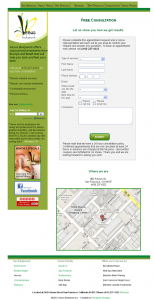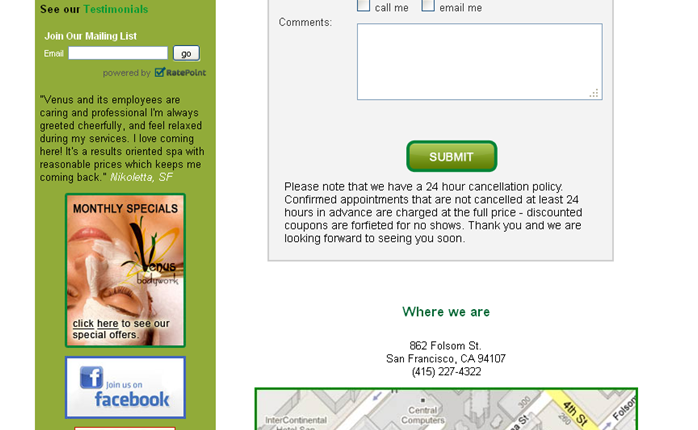A value proposition is the one thing that sets your company apart from your competitors in the eyes of your ideal customer. At MarketingExperiments, we define the core value proposition as the fundamental answer to the question: “If I am your ideal customer, why should I buy from you rather than your competitors?”
It’s a simple question. But many marketers find it almost impossible to answer. Articulating it clearly is hard enough, but internal political battles and highly opinionated superiors make it even harder for the average marketer in the trenches.
And yet, with all these challenges, it’s easy to overlook the person that can actually help you the most in determining what sets you apart from your competitors…
The customer.
Now to truly hear the opinion of the customer you need to test. Measuring actual behavior is the only way you can be absolutely sure you are effectively capturing the minds and hearts of your customers.
And while the act of running tests on your website and in your marketing campaigns is certainly hard, what’s even harder is figuring out how to design your tests so you get a learning about your customers. To do that (specifically as it relates to value proposition) you need to start with some qualitative research on your customers to get ideas about what they value and don’t value about your business.
Once you’ve got those ideas, you can start testing potential value propositions.
While you’re certainly not limited to the Internet for conducting that research, mainstream social networks are a great place to start.
But you must widen your gaze. Even on the Internet, social networks like Twitter and Facebook are only a fraction of the places you could potentially scour for your testing ideas.
Forums and business/product review sites (i.e. Yelp, CNET, Amazon) can be just as helpful (if not more so) and can also be mined for insight into the minds of your customers.
Where ever you decide to look, you must ask two main questions before you can generate value proposition testing ideas:
- Are there any patterns in these results?
- Why?
When you’ve asked those questions, you likely have enough to start testing.
Of course that’s very easy for me to say and another thing entirely for you to do it. So to illustrate what I mean, I took the liberty of doing some research for an audience member of a past Web clinic. That audience member, Todd of Venus Bodywork, Inc., submitted the following page to be reviewed by our researchers for the Live Testing Strategy Session we held at the end of the clinic:

Our researchers didn’t get a chance to review this site during the Web clinic, so I thought it would be a great opportunity for me to illustrate how to go about finding test ideas using a review site.
From what I gathered on the site, Venus Bodywork is a fairly specialized day spa that offers cutting edge spa treatments that actually generate “aesthetic benefits,” in their words.
Now there are some weaknesses in this page. While the page does do a good job of quickly getting to the form, one of the things this page (and the site in general) suffers from is a lack of clarity in the value proposition. Don’t get me wrong, this site still does a better job than most I’ve seen in stating a value proposition, but it’s not quite there yet. Fortunately for Todd, what the spa doesn’t suffer from is a lack of great reviews on Yelp.
So using those reviews I started to generate ideas for testing different value propositions. Here’s how I did it.
Look for patterns in the reviews
As any good statistician knows, patterns are the first thing to look for in any set of data. This is because, as Daniel Burstein put it, “patterns indicate potential learning.” By simply scanning the reviews I found two main patterns:
1. Many of the reviewers actually saw results.
- “For a noticeable change in body appearance, I usually notice a difference after the third session.” – D.T.
- “After a year, I am wearing a bikini proudly around the pool. Every one notices the change. My shape is better but most importantly, the cottage cheese lumpiness that was building on my thighs is improving with every session.” – Susan W.
- “…the heccus+dermosonic package has helped a few of my problem areas and made me look and feel amazing!” – Rodelander S.
- “…they gave me an amazing hydrating treatment that made my skin look fabulous all for free! Fantastic business practices!” – Maya K.
2. Most of the reviewers mentioned a specific individual in their review.
- “Genevieve is really good! I’d go back!” – Anna B.
- “I had one of the best facials EVER with Francesca at Venus Bodywork.” – Kira K.
- “Genevieve was wonderful.” – Laura K.
- “Marcia, the manager of this place, is an ANGEL!” – Phoebe B.
Ask “Why?”
Once you’ve identified some of the patterns in the reviews, all you need to do is sit back and wonder about why those patterns showed up.
Easy right? I wonder about things all the time.
This is one of the first steps to learning something. And since “the goal of a test is not to get a lift, but rather to get a learning,” we know we’re on the right track.
So in this case, the first thing I would want to learn is whether or not the value communicated by reviewers on Yelp reflects the value the website’s visitors are actually searching for.
To do that, I would develop some treatments that clearly communicate the fact that most of the customers that come through the door get results.
- Taking testimonials straight from Yelp might be a good strategy here.
- A clear headline stating the percentage of women that see results might also be a good idea.
- Adding in the individual stories and pictures of the women who work at the spa could help as well.
After that, assuming you found a value that resonated better than the control, I’d want to know which of the value propositions resonated better. To test that, I might create two treatments:
- One that focused on the results
- One that focused on the individuals
I could go on, but you get the idea. The testing possibilities are endless and if you design your tests correctly, with each test you learn a little more about your customers until you can easily craft a value proposition.
Related Resources:
Negative Lifts: How a 24% loss produced a 141% increase in conversion
Value Proposition: How to use social media to help discover why customers buy from you
Bad Data: The 3 validity threats that make your tests look conclusive (when they are deeply flawed) — Wednesday’s Web Clinic




Another effective method I use to derive value proposition statements is to survey existing customers and ask them what they like about us, the main reasons they choose us over competitors, etc.